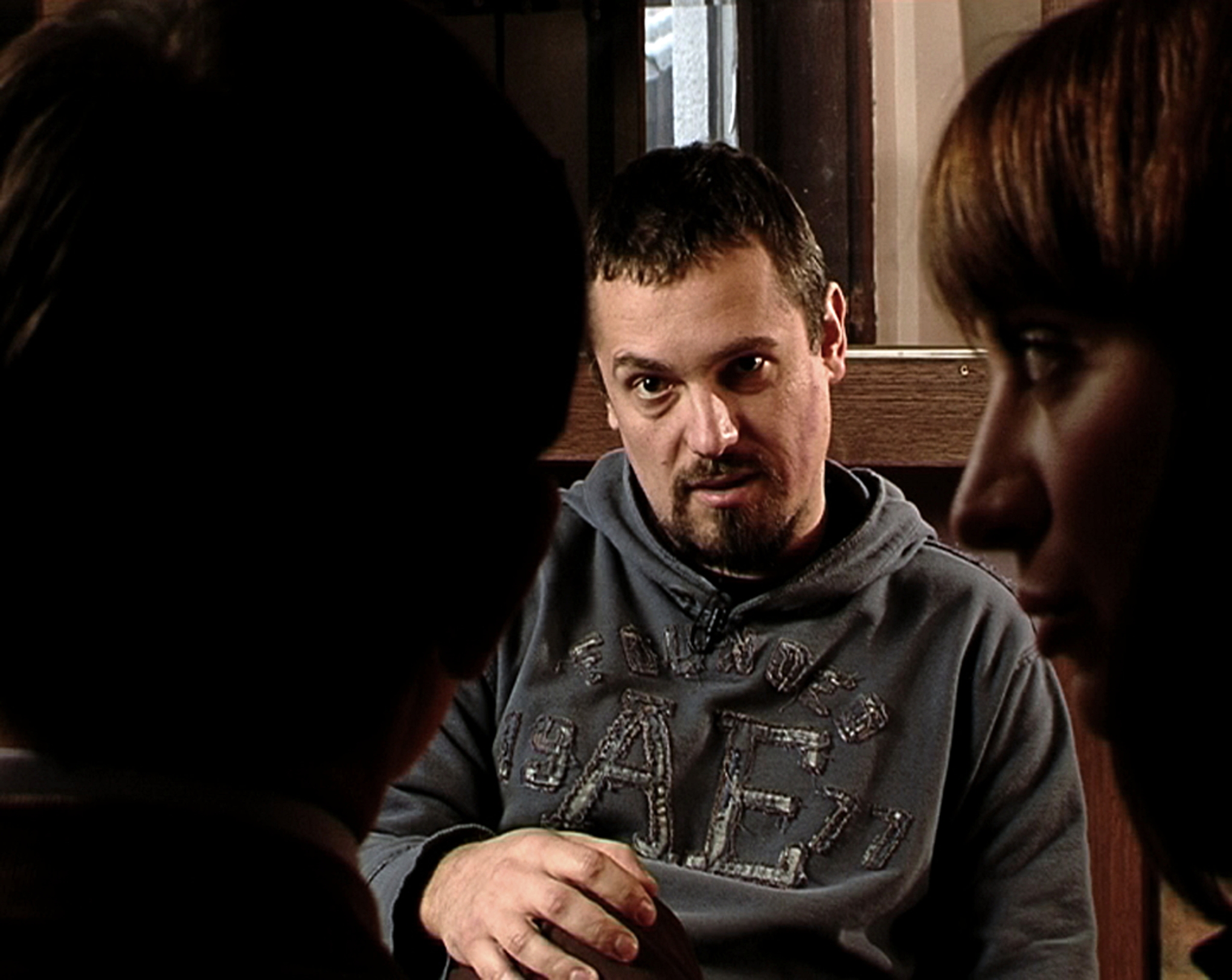The Interview (2007), two channel video installation, HD CAM 4:3 transferred on Blu-ray, Color//Sound. Duration 35 min
The Interview consists of a journalistic interview with a Serb veteran and a docu-fiction, which is based on the original interview and is played out by actors. Tsivopoulos took on the role of creative producer, commissioning these two distinct visual products from opposing ‘visual industries’, blurring the borders between fiction and reality by questioning the importance of the ‘true story’.
The work is structured in two parts: in the first (The Interview) Tsivopoulos commissioned a BBC news-correspondent stationed in Sarajevo, to obtain an interview from a Serb/Bosnian war-veteran, with the guideline to investigate the personal and emotional impact of war. The venue of the interview is Legacy Colakovic, a modernist building in Belgrade, which has a range of historic use from bourgeois house, to museum annex, to a gambling house, to a film set, reflecting the broader historical and socio-political changes in the country. The interview follows the typology and conventions of television journalistic products.
In the second part (An Interview With War), Tsivopoulos commissioned a Serbian film director to undertake the adaptation of the transcript of the original BBC interview with the veteran and turn it into a short movie. The short film is also shot in the interior of Legacy Colacovic.
The work constructs a composite field of multiple displacements, sliding from reality to the fictitious. The two interviews, two independent systems with specific terms and structure of function, are presented in the framework of an installation, supplying and decoding one another.
The Interview is the third and last part of the Trilogy The Real The Story The Storyteller, in which Tsivopoulos focuses on the meaning of image production and its contribution on the manufacturing of history. In these works Tsivopoulos “questions the document as an objective trace left by events, as material evidence, or as the certification of reality. In this sense, he brings into question the authenticity of the document, and thus also its authoritativeness in providing evidence for the construction of history.”


